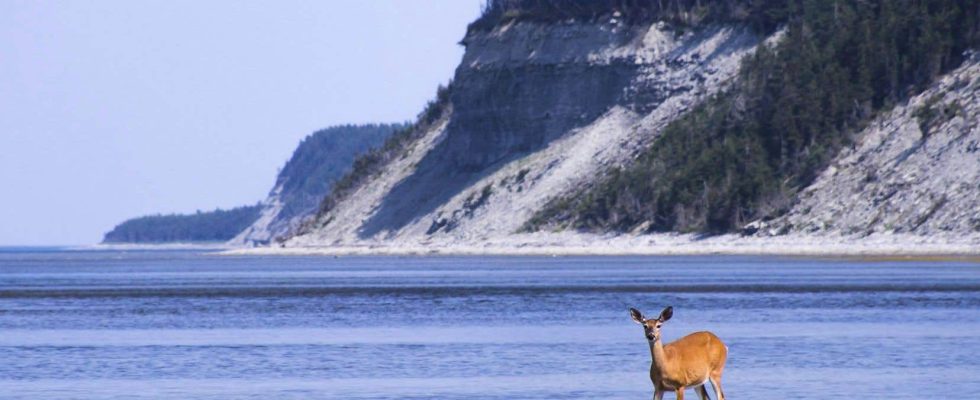A recent report published by the Blue Organization (OB) draws up a damning observation of plastic pollution in eastern Canada. From Newfoundland to Ontario, the OB traveled the banks to remove plastic waste. In 91 cleanups spread across this entire territory, it collected tons of plastic waste. According to the report, the observed distribution of waste shows a significant accumulation downstream of large urban centers, in the estuary and gulf regions, as well as on the Atlantic coasts.
OB officials recently explained in written and spoken media that their approach had made it possible to collect unprecedented data on plastic pollution in the St. Lawrence water network, particularly on Anticosti Island. “In Anticosti, on the slope [sud], which faces the Gulf, were open-air dumps. Currents carry waste to these shores devoid of humanity. »
Do these statements describing a disastrous situation in Anticosti hold water? To answer this question, simply consult the report and the interactive map on the OB website and its database hosted by the St. Lawrence Global Observatory.
The OB evaluated three Anticostian sites in September 2022 during a sailing expedition in the Gulf, each site having been the subject of a study of a few hours. Two sites are located on the north slope, while the third is located on the south slope. On the north slope, waste was collected at Natiscotec Bay and Renard Bay by around ten volunteers.
On the southern slope, four volunteers collected plastic waste at Pointe de la Croix. Each site studied covered an area of 4000 square meters or was a few hundred meters, while the coastline extends over more than 550 km. The three sites studied by the OB represent at best 0.002% of the entire Anticostan coastline.
Are these three sites representative of the plastic pollution found on the coast in Anticosti? The answer is a resounding no. Two sites (Pointe de la Croix and Baie du Renard) are near recently abandoned lobster fishing camps, which have accumulated waste of all kinds over the decades. These small illegal dumpsites – there are less than ten in total on Anticosti – are local sources of waste, now exhumed by coastal erosion and dispersed by coastal currents, particularly at Pointe de la Croix.
This site, the only sampling point on the south shore of Anticosti, leads to a large overestimation of the island’s plastic pollution and leads us to question the relevance of the OB’s declarations. We understand, however, that the sensationalist terms of “open-air dump in Anticosti” provoke a strong reaction, which is probably the primary objective here since plastic pollution is currently one of the biggest environmental concerns in the world.
What is the picture of plastic pollution in Anticosti if the one proposed by the OB is incorrect? Having had the chance to walk a large part of its coastline, we must recognize that waste of all kinds can accumulate, mainly fishing tackle transported short distances after a storm. Illegal coastal dumpsites, few in number in Anticosti, remain special cases and require a vigorous targeted cleanup effort by the municipal, provincial and federal authorities concerned.
The recent inscription of Anticosti on the UNESCO World Heritage List should encourage the rallying of these authorities and the rapid start of a clean-up. Without minimizing the important environmental issue of plastic pollution, we are however really far from an open-air dump on the Anticosti coast. In fact, this magnificent territory is in some way the victim of unacceptable human behavior that needs to be pointed out, and it is essential to tackle the source of the problem.
